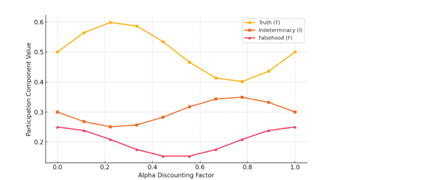A Neutrosophic α-Discounting–Reliability Model for Evaluating Blended Chinese Language Courses in Vocational Colleges
Keywords:
α-Discounting, Neutrosophic Sets, Data Reliability, Blended Learning, Chinese Language EducationAbstract
-Blended Chinese language courses in vocational colleges combine in-person and
online activities. Measuring how effective these courses are is difficult because of
differences in student engagement, data reliability, and uncertainties in participation. This
paper proposes a new mathematical model that combines the α-discounting method,
neutrosophic logic, and a data reliability factor. The model represents student
engagement as truth (T), indeterminacy (I), and falsehood (F) while using α-discounting
to handle inconsistencies in student feedback and performance. We introduce a new factor
to measure the reliability of data and show how this affects the overall evaluation. Many
equations are provided with clear explanations, and step-by-step numerical examples
show how to use the model in real teaching situations. This approach gives teachers a
better way to measure and improve blended Chinese language courses.
Downloads

Downloads
Published
Issue
Section
License
Copyright (c) 2025 Neutrosophic Sets and Systems

This work is licensed under a Creative Commons Attribution 4.0 International License.






